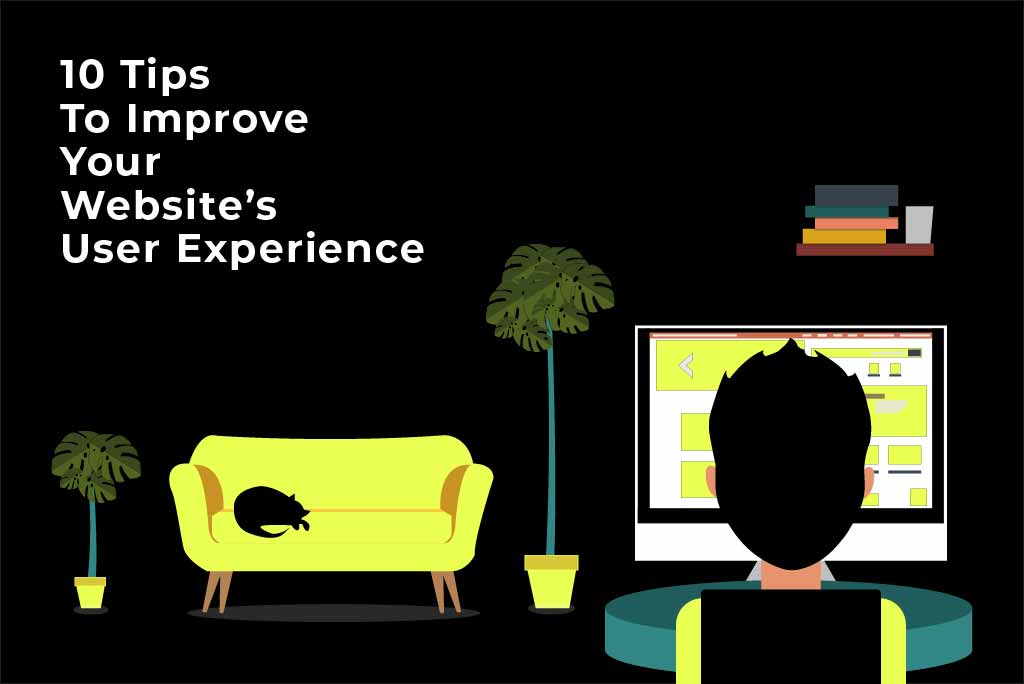In today’s highly digitalised world, an online presence is critical to the success of any business. If you are looking for tips on how to improve your website’s user experience and make it more user-friendly, you are in the right place!
User experience is key to engaging more customers, generating quality leads and driving more sales. However, designing an attractive and user-friendly website that offers an unparalleled user experience is not an easy task and requires an understanding of the problems visitors face while scrolling through your website.
In this article, you’ll find 10 proven tips to improve your website’s user experience in line with the best design principles, attract more prospects and increase conversions.
What Is User Experience?
User experience (UX) is all about how people feel while interacting with your website. Simply put, good user experience allows users to navigate your website easily, providing a smooth and memorable experience of your brand.
Enhancing a website’s user experience is crucial for any business. According to user experience statistics, more than 40% of users exit a website with bland aesthetics and layout, and 30% won’t return to the site after a bad user experience.
Whether you are an established business with a strong online presence or a startup creating your first website, intuitive and attractive UX design should be your top priority, as it will help you provide a seamless user experience, establish your brand image and bring long-term value to your business.
10 Tips To Improve Your Website’s User Experience
Here are the top 10 tips to improve your website’s user experience, increase engagement and make you stand out from your competitors. When optimising your website for user experience, it is always good practice to keep in mind neuro web design principles and website security best practices.
Optimise Your Page Speed
With an increase in the use of mobile devices, such as smartphones and tablets, one of the most frequent user experience problems is the slowly loading website.
Website speed directly influences your search engine rankings, conversion rates and ability to attract repeat buyers. Optimising your website speed will let your online visitors access your content and get things done fast, which will help you decrease your bounce rate and increase conversions. You can optimise the speed of your website by enabling caching, minimising HTTP requests, optimising and compressing images, minifying CSS and JavaScript, and using a fast hosting provider and content delivery network (CDN).
Use a Catchy Call to Action
A catchy, visually appealing call to action is a crucial design feature of any website, and it can drastically increase your website’s conversion rate. A call-to-action button should be distinctive and compelling enough to immediately attract the attention of your potential clients.
For example, you can use coloured or flashy buttons with action-oriented phrases to encourage visitors to take a specific action, such as making a purchase or signing up for product updates or newsletters.
Make Your Website Mobile-Friendly
More than half of the website traffic comes from mobile phones, and this number is expected to grow further. A responsive website that is easy to navigate on smartphones and tablets can increase your visibility on search engines and boost your website traffic in more ways than you can imagine.
To ensure that your website looks great on mobile devices, focus on responsive design that adjusts the layout of your website to fit the screen size of the device. It is also good practice to simplify navigation, use mobile-friendly fonts and large buttons, and optimise and compress images.
Use White Space
Using white space on your website is important for several reasons: it improves readability and usability, clarifies the relationship between website elements, enhances visual appeal and increases user engagement. By using white space, you can also reduce the cognitive load on your users by breaking up content into smaller, more digestible chunks, which can improve comprehension and retention.
Using white space can significantly improve the user experience. When used effectively, white space can help create a balanced, harmonious design that is both functional and aesthetically pleasing.
Avoid 404 Errors
404 errors occur when a page is requested from a server that cannot be found. These errors can happen for several reasons, such as when a page has been deleted or when a URL has been changed without redirecting the old URL to the new one.
404 errors can be frustrating for users who are trying to access content on your website. Too many 404 errors on your website can also harm your search engine optimisation (SEO) efforts, as well as your credibility. Users may perceive your website as outdated or poorly maintained, which can damage your brand reputation.
To avoid 404 errors on your website, it’s important to regularly check your website for broken links, update URLs when necessary and use 301 redirects to redirect old URLs to new ones.
Ensure Clear Navigation
The navigation experience of your website is one of the most crucial factors in making your website look more accessible. Your website’s layout, design and language should be simple, understandable and self-explanatory, giving users a clear sense of where to go next.
To ensure clear navigation, use visual cues, breadcrumbs, and clear and descriptive labels for your navigation links. Avoid using too many links or dropdown menus that can overwhelm users, and organise your navigation links into a clear hierarchy that reflects the most important pages first and less important pages later.
Focus on Content
When a user visits your website, they are looking for specific content. If your website successfully meets their requirement, providing them with strategically organised content, the user will be less likely to bounce to another site.
Identify your user needs to create unique and engaging content that solves a relevant problem faced by your target audience. Creating and publishing high-quality content will help you increase your business’s credibility and attract new leads.
Differentiate Hyperlinks
Hyperlink differentiation can help users quickly and easily identify clickable links on your website, which can improve the overall user experience. Hyperlink differentiation can also enhance the visual appeal of your website by creating a clear visual hierarchy and improving the overall design.
There are several ways to differentiate hyperlinks, including using different colours, underlining text or using bold text. It’s important to be consistent with your hyperlink differentiation to ensure that users can quickly identify clickable links throughout your website.
Use Images That Reflect Your Brand
Images are a powerful tool for building brand identity and recognition. By using images that reflect your brand’s values and personality, you can create a consistent and memorable brand identity that resonates with your target audience. Using unique and captivating images can also help you create an emotional connection with your customers and build a loyal following.
It is important to maintain consistency in imagery across all of your marketing channels to reinforce your brand identity. By using images that reflect your brand’s unique selling proposition, you can also create a visual language that sets your brand apart from the competition. To improve user experience, you should also optimise images for SE0.
Request Minimal Information for Sign-Up
Requesting only essential information during the sign-up process can improve the user experience by reducing the time and effort required for users to sign up for your service. It can also increase your conversion rates because when users are required to provide too much information during the sign-up process, they can abandon it altogether.
Users are also becoming increasingly concerned about their online privacy and the security of their personal information. By requesting only the information you need to provide your service, you can build trust with your users and demonstrate your commitment to protecting their privacy.
Summary
Your website is one of your most important assets and the hub of your online marketing efforts. All the critical design elements must fit together, granting users a seamless and rewarding experience.
Hopefully, these tips to improve your website’s user experience will help you revamp your website to be more interactive and user-friendly and form a lasting impression on your prospective customers.
Altlier is a full-service web design agency. Our team builds visually appealing, custom-made, SEO-optimised websites that offer outstanding user experience. We also provide website maintenance services. See our profile on DesignRush and discover why teaming up with us is the best decision for your next project. To receive a detailed web design quote, check out our handy Website Design Cost Calculator.



